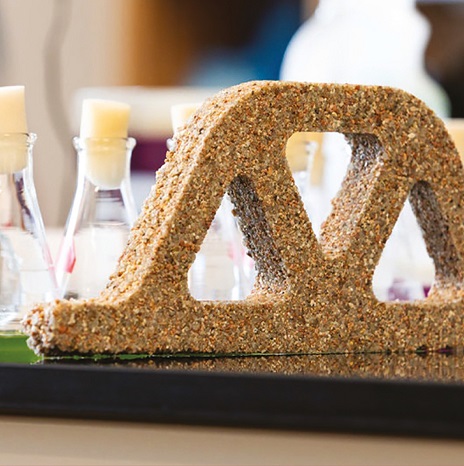And finally… Living walls
Biologically inspired materials, able to grow and adapt to their environment, could extend the lifespan of electronic devices, medical implants and infrastructure, and unlock an array of environmental benefits, according to a report by the Royal Society.

The Perspective on Animate Materials report identifies these human-made materials, which mimic living systems, as a field which could deliver major change across a range of sectors and sets out a roadmap to make them a reality.
This includes bringing together researchers working on seemingly different parts of the animate materials problem. Synthetic biologists and chemists working on molecular machines for drug delivery and engineers designing roads able to repair potholes.
Supporting collaboration, through cross-disciplinary research funding, should also draw on the expertise of environmental scientists, economists, and others to identify opportunities and challenges from new technologies to support a greener future.
“Because the kit that’s entered our homes and lives is so complex, we’re all helpless when it breaks,” said Professor Mark Miodownik MBE FREng, Professor of Materials and Society at University College London, and one of the report co-chairs. “Phones are an obvious example, but you can see it across our society. Too often one bit goes wrong and the whole thing is scuppered. Biology is much more robust, it adapts, it self-repairs.
“One of the messages of the report is that we should ensure that sustainability and circularity is baked in at every step. While animate adaptive materials could improve longevity, we also need to think about where we source raw materials and their eventual disposal or reuse when that lifespan is up.
“These calls chime with the drive to build the UK’s basic science and high-risk, challenge-led research capacity together. Because the ultimate goal might be sustainability, but the science that needs to be done is deeply blue skies”.
The report suggests three characteristics that future “animate” materials could exhibit; they could be:
- ‘Active’, able to change their properties or perform actions, using energy, material or nutrients from the environment. Recent work includes an active bandage which turns red in the presence of drug-resistant bacteria, helping limit the emergence of antibiotic resistance.
- ‘Adaptive’, by sensing changes in their environment and responding. Road surfaces, or construction materials that do not require maintenance because they are able to self-diagnose continuously and repair potholes, cracks or minor damage is one major research area.
- ‘Autonomous’, meaning they can initiate a response from a range of options, without being controlled, through internal computation, or computation-like process.
Some examples of ‘active’ or ‘adaptive’ materials, such as self-healing paints and concrete have already come to market, but developments of more ‘autonomous’ materials in future could enable even greater flexibility. For example, living walls that capture carbon dioxide and pollutants from the air and use them to repair structural faults, generate energy or clean water.
Materials with these sorts of properties could be valuable in adapting to the effects of climate change, or inhabiting new environments where replacing or repairing components is more difficult.
“What this report does, for the first time, is stand back and look at the breadth of possibilities animate materials offer us from the built environment to medical applications,” said Professor Russell Morris FRS, Bishop Wardlaw Professor of Chemistry, University of St Andrews and one of the report’s co-chairs.
“We are likely to see an increase in the use of these types of materials by 2050, so now is the time to think about good practise and the opportunities and risks that may arise, how business models need to change to prioritise sustainability, and how we involve the public so we can bring them with us on this journey.”
A Royal Society event on Wednesday 10 March will invite the public to imagine future products or applications for animate materials that could deliver real societal benefit.
These ideas will contribute to a ‘library of future materials’ which can inform research and kick start conversation about how and why materials used in everyday life behave the way they do.
This dialogue across society is key to building trust in new technologies, as demonstrated in the push for “explainable AI” in the digital systems that already play an outsized role in our lives.
Ongoing, flexible regulation and oversight of animate materials, and mechanisms to ensure that their ability to change and grow can be limited or switched off, will also be important.













